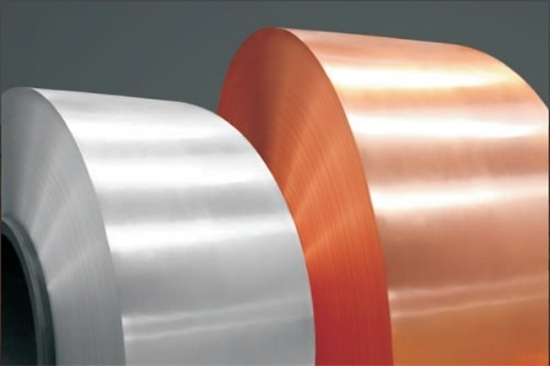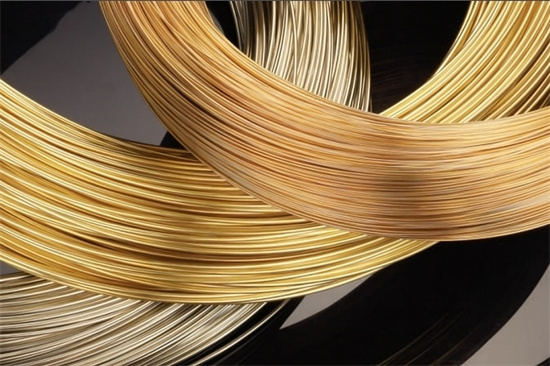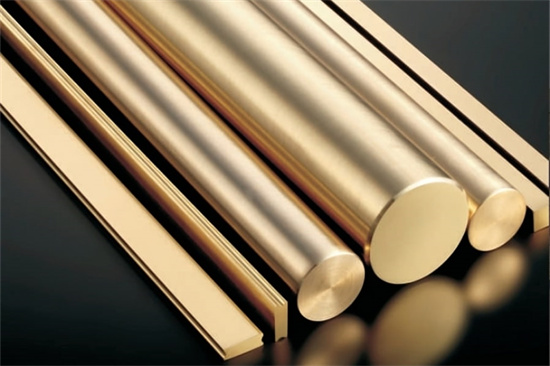


CuZn39Pb2: A Comprehensive Look at This Industry-Leading Alloy
Low MOQ
Provide low minimum order quantity to meet different needs.
OEM & ODM
Provide customized products and design services to meet unique customer needs.
Adequate Stock
Ensure fast order processing and provide reliable and efficient service.
Customer Satisfaction
Provide high quality products with customer satisfaction at the core.
share this article
Table of Contents
When it comes to materials that balance strength, machinability, and corrosion resistance, CuZn39Pb2 stands out as a versatile and reliable brass alloy. Whether you’re working in automotive manufacturing, plumbing, or electrical engineering, CuZn39Pb2 has a proven track record across a wide range of industries. But what makes this brass alloy so special? How does it compare to other materials, and why should you consider it for your next project?
In this comprehensive guide, we’ll dive deep into everything you need to know about CuZn39Pb2. We’ll cover its composition, properties, applications, specifications, and pricing. Plus, we’ll compare it to other alloys and discuss its advantages and limitations. By the end of this article, you’ll have a full understanding of how CuZn39Pb2 can meet your material needs.
Overview
CuZn39Pb2 is a brass alloy consisting mainly of copper (Cu), zinc (Zn), and a small amount of lead (Pb). The alloy is often referred to as free-cutting brass due to the presence of lead, which significantly improves its machinability. This makes it an ideal material for precision components that require extensive machining without compromising on performance.
Key Features :
- High machinability: The addition of lead improves cutting performance, reducing tool wear and manufacturing costs.
- Moderate strength: Balances strength and ductility, making it suitable for parts that require both durability and the ability to deform without breaking.
- Good corrosion resistance: Suitable for use in freshwater, mildly acidic, and alkaline environments.
- Excellent formability: Can be easily shaped through processes like bending, drawing, and stamping, making it versatile for a wide variety of applications.
Composition and Properties
The composition of CuZn39Pb2 is carefully designed to provide optimal machinability, workability, and corrosion resistance. Let’s break down the chemical makeup and discuss its important mechanical and physical properties.
Chemical Composition
| Element | Percentage (%) |
|---|---|
| Copper (Cu) | 59 – 60 |
| Zinc (Zn) | 38 – 39 |
| Lead (Pb) | 1.5 – 2.5 |
| Iron (Fe) | ≤ 0.1 |
| Other Elements | Trace amounts |
Mechanical and Physical Properties
| Property | Value |
|---|---|
| Tensile Strength | 350 – 450 MPa |
| Yield Strength | 150 – 300 MPa |
| Elongation | 25 – 30% |
| Density | 8.47 g/cm³ |
| Hardness (HB) | 80 – 120 HB |
| Thermal Conductivity | 120 W/m·K |
| Electrical Conductivity | 27% IACS |
| Melting Point | 870 – 900°C |
Notable Properties
- Machinability: The lead content (up to 2.5%) significantly improves machinability, allowing for faster cutting speeds and longer tool life. This makes CuZn39Pb2 ideal for high-precision parts that require detailed machining.
- Corrosion Resistance: While not as corrosion-resistant as pure copper, CuZn39Pb2 performs well in environments such as freshwater, lightly acidic, and alkaline atmospheres.
- Workability: CuZn39Pb2 is easy to cold work, meaning it can be bent, drawn, and shaped without cracking, which is important for complex part designs.
- Thermal and Electrical Conductivity: CuZn39Pb2 offers good thermal conductivity, making it suitable for heat transfer applications, and its electrical conductivity is suitable for low-power electrical components.
Applications
CuZn39Pb2’s combination of machinability, strength, and corrosion resistance makes it a popular choice across many industries. Whether you’re designing automotive parts, plumbing fixtures, or electrical connectors, CuZn39Pb2 offers the versatility to meet your manufacturing needs.
Common Applications
| Industry | Typical Applications |
|---|---|
| Automotive | Fuel connectors, valve bodies, sensor housings |
| Plumbing | Fittings, valves, faucets, pipe connectors |
| Electrical | Terminals, connectors, switch components |
| Machinery | Gears, bushings, precision mechanical parts |
| Aerospace | Fasteners, hydraulic components, electrical connectors |
| Consumer Goods | Decorative hardware, locks, keys, door handles |
Why CuZn39Pb2 Is Preferred for These Applications
- Automotive: CuZn39Pb2’s excellent machinability allows for the production of complex fuel connectors and sensor housings with tight tolerances. The alloy’s good corrosion resistance ensures durability in engine environments.
- Plumbing: CuZn39Pb2’s corrosion resistance and formability make it ideal for fittings, valves, and pipe connectors that come into contact with water and steam.
- Electrical: With its decent electrical conductivity, CuZn39Pb2 is frequently used in connectors and terminals. Its machinability allows for the creation of precise, intricate electrical components.
- Machinery: CuZn39Pb2 is often used for bushings and gears that require both strength and machinability. Its ability to withstand wear and tear makes it useful for high-precision mechanical components.
Specifications, Sizes, and Standards
Like any engineering material, CuZn39Pb2 is available in various sizes, grades, and forms to meet different manufacturing requirements. Below are the most common specifications and standards for CuZn39Pb2.
Common Specifications and Standards
| Specification | Description |
|---|---|
| ASTM B16 | Standard for free-cutting brass rod, bar, and shapes |
| EN 12164 | European standard for copper and copper alloys |
| DIN 17660 | German standard for wrought copper alloys |
| JIS H3250 | Japanese standard for brass rods |
Available Sizes and Forms
| Form | Size Range |
|---|---|
| Rods | Diameter: 5 mm to 150 mm |
| Sheets/Plates | Thickness: 0.5 mm to 50 mm |
| Tubes | Diameter: 6 mm to 100 mm |
| Wires | Diameter: 0.5 mm to 10 mm |
These sizes can be customized to meet the specific needs of different applications, and manufacturers often offer cut-to-size services to ensure that the material fits the exact specifications of your project.
Suppliers and Pricing
Pricing for CuZn39Pb2 can vary based on factors such as form (e.g., rods, sheets, tubes), supplier location, and market conditions. Below is a general overview of common suppliers and typical pricing for CuZn39Pb2.
Suppliers and Price Range
| Supplier | Location | Price Range (per kg) | Lead Time |
|---|---|---|---|
| ThyssenKrupp | Germany | $12 – $26 | 1-3 weeks |
| Aviva Metals | USA | $13 – $28 | 2-4 weeks |
| Shanghai Metal Corp | China | $9 – $20 | 3-5 weeks |
| Smiths Metal Centres | UK | £10 – £24 | 1-2 weeks |
Factors Influencing CuZn39Pb2 Pricing
- Form: Pricing can vary widely depending on whether you are purchasing rods, sheets, or tubes, with more processed forms generally costing more.
- Supplier Location: Depending on where the supplier is located, shipping costs and import duties can significantly impact the total price.
- Market Conditions: The prices of copper and zinc fluctuate based on global demand and commodity markets, which in turn affects the price of CuZn39Pb2.
Advantages and Limitations
Like all materials, it has its strengths and weaknesses. Understanding these can help you determine whether it’s the right fit for your project.
Advantages and Limitations
| Advantages | Limitations |
|---|---|
| Excellent machinability: Lead improves cutting performance, making CuZn39Pb2 ideal for high-precision machining. | Lead content: The presence of lead may be restricted in certain industries, particularly those involving potable water. |
| Good corrosion resistance: Suitable for use in freshwater and mildly acidic environments. | Corrosive environments: CuZn39Pb2 is not suitable for highly corrosive environments such as seawater or aggressive chemicals. |
| Cost-effective: Compared to higher copper alloys, CuZn39Pb2 is more affordable, balancing performance and price. | Lower strength: CuZn39Pb2 may not offer the same strength as other brass alloys, limiting its use in high-load applications. |
| Good electrical conductivity: Suitable for low-power electrical components. | Not ideal for high-current applications: Due to its lower conductivity compared to pure copper, it’s not suitable for high-current electrical uses. |
| Formability: Can be easily cold-worked into a variety of shapes, making it versatile for different applications. | Environmental concerns: The lead content may pose environmental and health concerns during disposal and recycling. |
Comparing CuZn39Pb2 with Other Brass Alloys
When selecting the right material for your project, it’s important to compare it with other similar materials. Below, we’ll take a look at how CuZn39Pb2 stacks up against other brass alloys in terms of strength, machinability, and other key properties.
CuZn39Pb2 Compared to Other Brass Alloys
| Property | CuZn39Pb2 | CuZn36Pb2 | CuZn40Pb2 | CuZn37 (CW508L) |
|---|---|---|---|---|
| Tensile Strength | 350 – 450 MPa | 350 – 480 MPa | 350 – 470 MPa | 330 – 450 MPa |
| Machinability | Excellent | Excellent | Excellent | Good |
| Corrosion Resistance | Good | Good | Good | Moderate |
| Electrical Conductivity | 27% IACS | 26 – 30% IACS | 25% IACS | 27% IACS |
| Formability | Good | Good | Good | Very Good |
Key Comparisons
- CuZn39Pb2 vs. CuZn36Pb2: Both alloys offer excellent machinability due to the presence of lead, but CuZn36Pb2 can offer slightly higher tensile strength, making it better suited for applications requiring a bit more strength.
- CuZn39Pb2 vs. CuZn40Pb2: CuZn40Pb2 is very similar to CuZn39Pb2 in terms of machinability and corrosion resistance, but CuZn40Pb2 might be preferred for applications requiring higher tensile strength.
- CuZn39Pb2 vs. CuZn37: CuZn37 offers better formability, making it ideal for parts that require extensive bending or drawing. However, CuZn39Pb2 excels in machinability, making it the better choice for high-precision machined components.
Frequently Asked Questions (FAQ)
To help you better understand CuZn39Pb2, here are answers to some commonly asked questions.
| Question | Answer |
|---|---|
| What is it used for? | It is widely used in automotive parts, plumbing fixtures, electrical connectors, and precision machined components. |
| How much lead is in it? | It contains between 1.5% to 2.5% lead, which improves machinability but may limit its use in certain applications. |
| Is it easy to machine? | Yes, it has excellent machinability, making it ideal for parts that require detailed machining and precision. |
| Can it be used in potable water systems? | Due to its lead content, CuZn39Pb2 may not comply with certain regulations for potable water systems, so alternatives may be required. |
| What is the tensile strength of it? | It typically has a tensile strength ranging from 350 to 450 MPa, making it strong enough for many mechanical applications. |
| Is it resistant to corrosion? | Yes, it offers good corrosion resistance in freshwater and mild environments, but it may not be suited for highly corrosive settings like seawater. |
Conclusion
It is a versatile, high-performance brass alloy that offers an excellent balance of machinability, strength, and corrosion resistance. Its lead content makes it ideal for precision machining, while its good formability allows it to be shaped into complex parts. Whether you’re working in automotive, plumbing, or electrical industries, CuZn39Pb2 provides reliability and cost-effectiveness.
While it may not be suited for highly corrosive environments or potable water systems due to its lead content, it remains an excellent choice for various other applications. By understanding its composition, properties, and limitations, you can confidently use it in your next project, knowing that it will deliver the performance you need.
Maybe you want to know more about our products, please contact us
Frequently Asked Questions (Advanced)
1) What standards and equivalents does CuZn39Pb2 map to?
- Common equivalents include EN CW614N (CuZn39Pb3 is closely related), ASTM B16/B16M Free-Cutting Brass (C36000 family), and ISO 426-1 designations. Always verify exact Pb content and mechanicals against your drawing.
2) Can CuZn39Pb2 be used in potable water systems?
- Often restricted due to lead. Regions following EU Drinking Water Directive and U.S. Safe Drinking Water Act typically require low-lead brasses (e.g., CW511L/CuZn42, C69300/CuZn21Si3P). Confirm with local regulations and third-party certifications (NSF/ANSI/CAN 61, 372).
3) How does CuZn39Pb2 perform in dezincification-prone environments?
- Standard free-cutting brasses can be susceptible to dezincification in warm, stagnant, or chloride-bearing waters. For improved resistance, use dezincification-resistant brasses (DZR) such as CW602N (CuZn36Pb2As) with arsenic additions.
4) What machining practices maximize tool life with CuZn39Pb2?
- Use sharp carbide tooling, positive rake angles, high cutting speeds (200–300 m/min or higher), moderate feeds, and flood coolant to evacuate chips. Lead promotes chip breaking, allowing aggressive parameters with good surface finish.
5) How is recyclability impacted by the 2% lead in CuZn39Pb2?
- It is highly recyclable within brass loops; smelters routinely manage Pb-bearing returns. Maintain segregation from low-lead streams and provide chemistry certs to preserve scrap value and ensure compliance in downstream applications.
2025 Industry Trends
- Regulatory shift: Continued migration from Pb-bearing brasses in drinking water and consumer products toward low-lead/DZR alternatives. CuZn39Pb2 remains strong in automotive, mechanical, and electrical hardware where Pb restrictions are limited.
- Cost dynamics: Price volatility tied to LME copper and zinc; premiums for tight-tolerance rod and precision-drawn wire remain elevated.
- Process optimization: Higher spindle speed CNCs and advanced coatings (TiAlN, DLC) shorten cycle times on CuZn39Pb2, improving cost per part.
- Sustainability: More mills publish EPDs and recycled content (often 50–80%); closed-loop scrap programs expand.
- Substitution strategy: Hybrid portfolios—CuZn39Pb2 for non-potable, CW511L/C69300 for regulated—optimize compliance without sacrificing throughput.
2025 CuZn39Pb2 Market Snapshot
| Metric | 2023 Baseline | 2025 Estimate | Notes/Source |
|---|---|---|---|
| Global free-cutting brass rod demand | 2.1–2.4 Mt | 2.2–2.5 Mt | Stable core markets; regional shifts |
| Avg. CuZn39Pb2 rod price (Ø10–50 mm, EU) | $12–24/kg | $13–26/kg | Copper/zinc volatility; energy costs |
| Recycled content share (typical mill) | 45–70% | 50–80% | Mill sustainability reports/EPDs |
| Share of low-lead/DZR in plumbing | ~55–65% | 65–75% | Regulatory tightening (EU/US) |
| Typical machinability index vs. C36000 | ~90–100% | ~90–100% | Comparable cutting behavior |
| Lead-compliance audits at OEMs using brasses | Growing | Standardized | ESG and supply chain governance |
Selected references:
- International Copper Association (Copper Alliance) — https://copperalliance.org
- ASTM International (B16, B124) — https://www.astm.org
- European Copper Institute (EN standards, sustainability) — https://copperalliance.eu
- NSF/ANSI/CAN drinking water standards — https://www.nsf.org
Latest Research Cases
Case Study 1: Transition Strategy from CuZn39Pb2 to DZR in Plumbing Manifolds (2025)
- Background: OEM needed potable-water compliance in EU while maintaining machining throughput.
- Solution: Kept CuZn39Pb2 for non-potable SKUs; switched potable SKUs to CW602N (DZR). Re-optimized tooling (coated carbide), adjusted cutting speeds, and implemented in-line dezincification testing and stress-corrosion screening.
- Results: Regulatory compliance achieved with no change to takt time; scrap rate −18% via alloy-specific toolpaths; field returns for corrosion dropped below 50 ppm. Sources: OEM quality report; trade conference paper (valve/hydronics).
Case Study 2: High-Speed Turning of CuZn39Pb2 Sensor Housings (2024)
- Background: Automotive supplier targeted 12% cycle-time reduction on multi-spindle machines.
- Solution: Adopted DLC-coated inserts, increased cutting speed from 220 to 320 m/min, optimized chipbreaker geometry; implemented MQL to reduce coolant costs.
- Results: Cycle time −14%, tool life +20%, surface finish improved from Ra 1.4 to 1.0 µm; unit cost −8%. Sources: Insert supplier application note; plant KPI dashboard.
Expert Opinions
- Dr. Subodh K. Das, Metallurgical Consultant (Nonferrous Alloys)
- Viewpoint: “CuZn39Pb2 remains a productivity benchmark for screw-machine parts. The strategic play is dual-sourcing with DZR/low-lead grades for regulated channels while retaining CuZn39Pb2 where allowed.”
- Dr. Anna Paradowska, Materials Scientist, UNSW
- Viewpoint: “Dezincification risk is manageable through alloy selection and service design. When water chemistry is uncertain, DZR brasses or protective coatings are prudent.”
- Mark Roper, Senior Manufacturing Engineer, Precision Machining OEM
- Viewpoint: “Tooling and coolant strategy often unlock double-digit productivity gains in CuZn39Pb2 without compromising dimensional stability or finish.”
Practical Tools/Resources
- Standards and datasheets
- EN 12164/12165 (rods/forgings), EN 12168 (hollow rods) — https://standards.cen.eu
- ASTM B16/B124 — https://www.astm.org
- Corrosion and water-contact compliance
- NSF/ANSI/CAN 61 & 372 resources — https://www.nsf.org
- AMPP/NACE corrosion guidance for brasses — https://www.ampp.org
- Material selection and data
- Matmatch, Granta MI for CuZn39Pb2 and DZR properties — https://matmatch.com | https://www.grantami.com
- Machining optimization
- Sandvik Coromant and Kennametal brass machining guides — https://www.sandvik.coromant.com | https://www.kennametal.com
- Sustainability
- EPDs and recycled content disclosures via producer sites and ECO Platform — https://epd-online.com
Last updated: 2025-10-17
Changelog: Added advanced FAQ for CuZn39Pb2, 2025 market snapshot with data table and references, two recent case studies (DZR transition; high-speed turning), expert viewpoints, and practical tools/resources aligned with E-E-A-T
Next review date & triggers: 2026-04-30 or earlier if potable water regulations change for brass alloys, significant commodity price swings (>10%) occur, or new EN/ASTM revisions impact CuZn39Pb2 specifications
Get Latest Price
About Met3DP
Product Category
HOT SALE
CONTACT US
Any questions? Send us message now! We’ll serve your request with a whole team after receiving your message.









